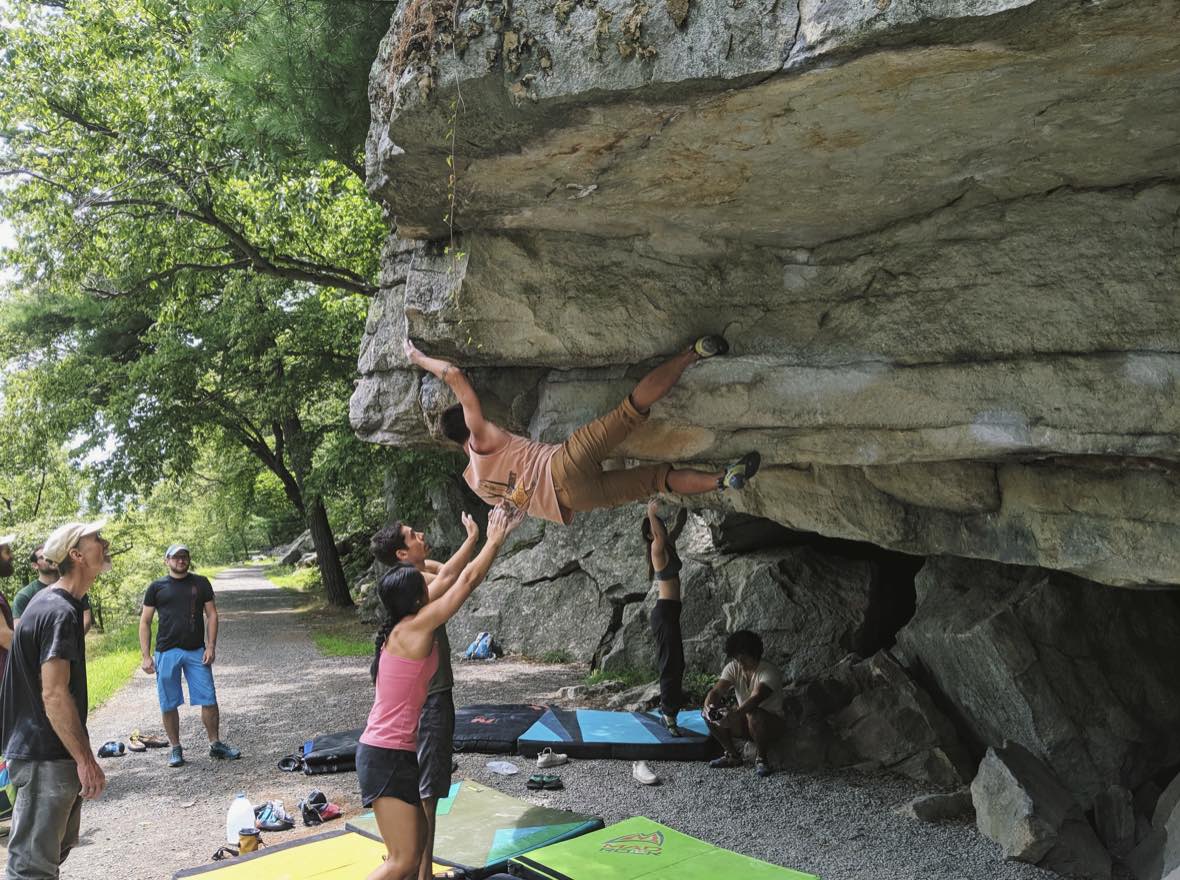Climbing into Details

To the untrained eye, every rock formation looks relatively similar. No notable crevices or ledges can be isolated to piece together a route up the boulder. However, as a rock climber, it is essential to piece together every move in detail! As a rock climber begins to study a wall in detail, they can begin to find the pieces with grooves, appropriately-positioned pebbles to stand on, and a possible sequence to complete the route. This forced attention to detail ignited my passion for climbing. In the picture above, the angle in which my right foot hooked onto the ledge and the manner in which my right hand gripped the sloper (a rock formation with no sharp edges) determined whether I was able to climb out of the lip (ceiling edge) of this cave!
My desire for understanding small details, and harnessing them to create clarity, productivity and narrative has been a thread through out my personal and professional life. An example of this is how I take the train in New York. As I wait for the train to arrive, I strategically choose to stand at the location of the platform that will drop me off closest to the elevator exit upon arrival, and allow me to get out of the station quicker.
As a scientist, every small detail contributes to understanding the biological machinery that runs life.
In particular, I am fascinated by proteins that can sense and/or transduce mechanical force. Cells are able to feel when it gets too crowded or too empty! They accomplish this through proteins that can sense the stiffness of the cell’s surrounding environment and transduce this mechanical sensation into a biochemical signal. This signal can influence the cell’s decision to move, or even differentiate! If we can understand how these proteins sense or transduce force at a structural and molecular level, we can begin to understand how it can affect downstream biochemical signaling and ultimately, cell behavior.
From understanding cell behavior, we can begin to understand the effect it has at a tissue-level, organ-level, and even at the organismal level!
For example, during development, skin cells will reach a critical density in which they begin to cluster together. As the cells pack into dense clusters, β-catenin, a protein part of a mechanosensing protein-complex at cell-cell junctions, will be released from the complex and travel into the nucleus to turn on a variety of transcription factors. This leads to activation and secretion of extracellular signals that in turn will promote the production of hair follicles by cells at the dermal layer of the cluster! Through understanding these little details, we can begin to piece together all of the moving pieces in a biology.
It is an exciting time to study mechanobiology. In the field of mechanobiology, we still don’t know the atomic details of how a molecule senses force. In a sense, much of the field is like an uncharted boulder. At a glance, the large pieces are notable (like how mechanosensation drives hair follicle patterning!), but a route has yet to be identified to connect all these notable pieces for bouldering (how do these mechanosensitive molecules use its structure to sense force?). Yet, similar to a rock-climber focusing on the little details of a boulder, scientists are working hard to “navigate” the molecular details that make a protein sense force. And, with the use of cutting-edge molecular biophysical methods, we may not be that far away from piecing together these small, invaluable details.
Edited by Lizzie Krisch
